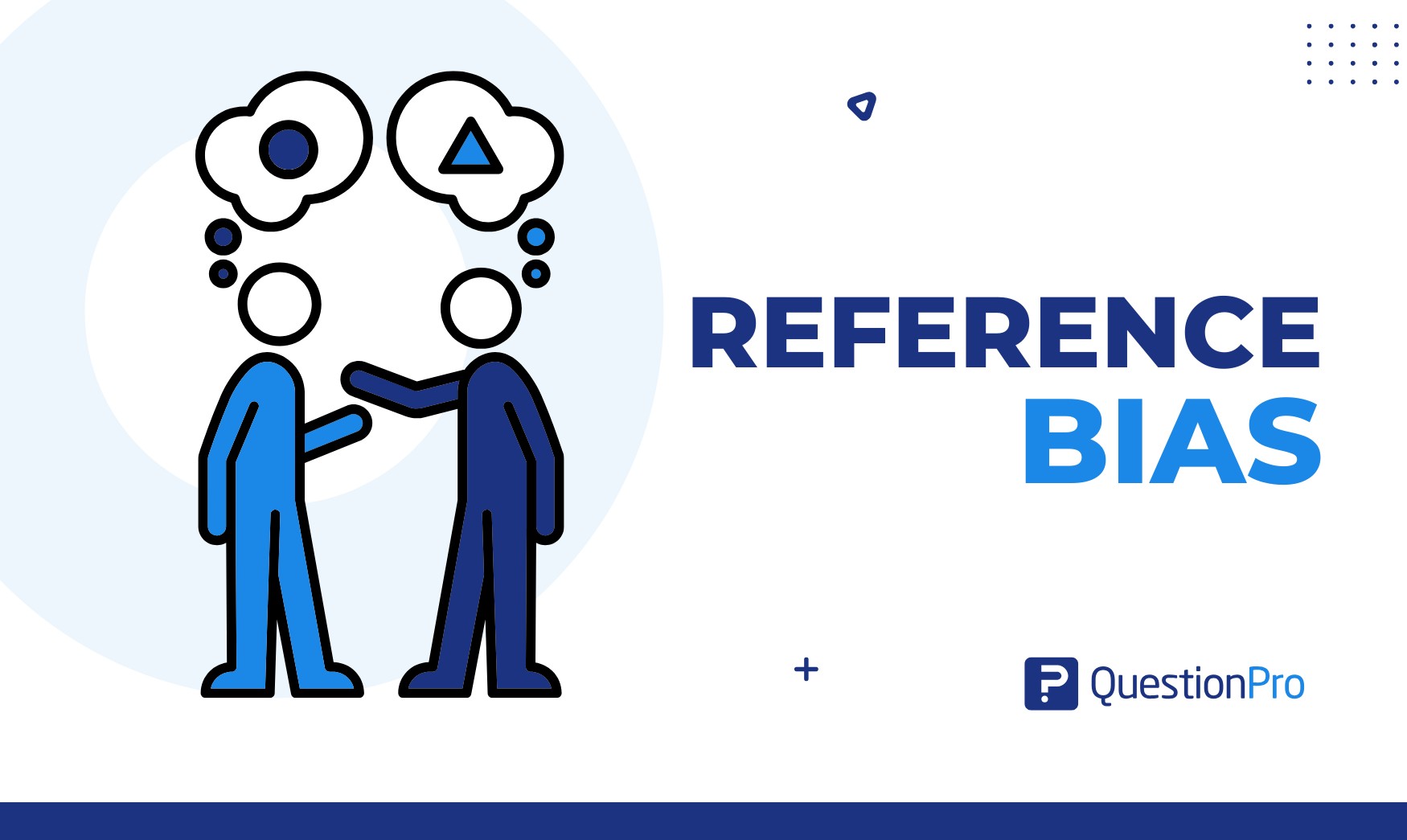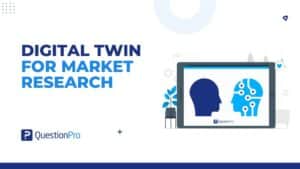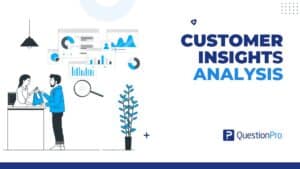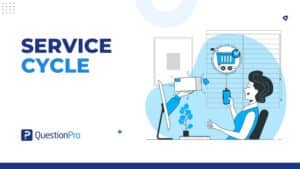
Reference bias is a hidden but influential factor that can affect the accuracy of research, surveys, and data analysis. It happens when the way information is presented or the sources used unintentionally influence your conclusions.
Whether you’re conducting market research, analyzing survey responses, or examining media, reference bias can lead to misunderstandings and distorted views. In today’s world, where information is everywhere, it’s important to recognize and address reference bias to ensure your data truly reflects reality. By understanding this bias, we can improve the quality of our research and make more informed, unbiased decisions.
In this blog, we’ll explore reference bias, how to identify it, and the best practices for minimizing its effects.
What is Reference Bias?
Reference bias is the tendency to select or interpret information in a way that favors certain viewpoints, preferences, or assumptions over others. This bias shows up when someone uses sources that match their own beliefs or goals instead of looking at multiple perspectives. Reference bias can be intentional or unintentional, but either way, it affects how we understand, share, and make sense of information.
When conducting surveys, reference bias can occur if only specific responses are included or if the survey is designed to elicit certain answers. For example, a survey about workplace satisfaction might seem more positive if only certain departments are included and others who might be less satisfied are left out.
Reference bias affects the accuracy and credibility of information. It can twist facts, shape opinions, and sometimes spread misinformation. Reducing reference bias in research, journalism, and decision-making helps promote honesty, openness, and trust in shared information.
Types of Reference Bias
Reference bias comes in many forms, and each one influences how we choose, share, and understand information. These biases shape how we see things and make decisions. Knowing them can help you identify where certain perspectives or findings might be overemphasized and how to look at information more balanced.
Here are a few examples:
1. Selection Bias
Selection bias is when only specific references are chosen to fit a particular view, and the others are ignored or downplayed.
For example, a marketer might only show positive reviews for a product and ignore the negative ones, so you only see one side of the story.
2. Confirmation Bias
This bias occurs when people focus only on information that supports their existing views and ignore anything that contradicts them.
For example, in research, a scientist might highlight studies that support their hypothesis and ignore those that don’t, which can distort the overall understanding of a topic.
3. Recall Bias
Recall bias is when people remember or report information selectively based on recent events or emotions. This often appears in surveys or studies after an event, where participants might emphasize specific details over others.
For example, a survey on recent customer experiences might be very different if it is done right after a product issue than months later.
4. Publication Bias
Publication bias occurs when only certain types of studies or findings are published, especially in fields like medicine or academia. As a result, successful outcomes are overrepresented, and studies with no or negative results are unpublished, giving a distorted view.
5. Reporting Bias
Reporting bias is when certain information is emphasized more than others. In media, this could mean a news outlet giving more airtime to sources that support their view.
For example, a political channel might feature experts from one party more often, which could make their coverage seem more balanced than it is.
6. Availability Bias
Availability bias occurs when you use the most recent or most available information to make conclusions.
For example, if the news heavily covers certain crimes, people might think those crimes are more common than they really are, even if the data says otherwise. This can lead to an incorrect understanding of how common or rare something is.
How to Identify Reference Bias?
Knowing how to identify reference bias can help you determine if the information is fair and complete. Here’s how:
1. Evaluate Source Diversity
A good sign of balanced information is when it has sources from all sides. Too many sources from the same few or the same view can be biased.
- If only one organization or country is cited, you’re not getting the full picture.
- Different types of sources, such as academic, industry, and independent, can help avoid one-sided views.
- Single-source reliance limits the range of opinions on complex topics.
2. Look for Contradictory Evidence
Balanced writing considers opposing views or evidence. If only sources that support one view are used, this might be selective referencing. To assess this:
- Look for evidence from both sides: Are alternative views or conflicting research included?
- Look for caveats: Good research admits limitations or counter-evidence.
If there’s only limited evidence supporting one side, it might mean the author picked sources to fit a certain conclusion. A balanced approach should include a mix of findings, even those that challenge the main argument. Watch out for sources that ignore valid but differing viewpoints.
3. Watch for Repeated or Dominant Sources
Too many sources from the same few can be biased, especially if the same experts or organizations are cited repeatedly. Check for these indicators:
- Look for repetition.
- Is the source overused?
- Diverse voices add credibility.
- Check for appeal to authority.
4. Check the Date and Relevance of References
The dates of the sources used can also reveal bias. If only recent research (or very old research) is included to support a narrative, this might be selective referencing. Consider the following:
- Does the article fairly represent findings across different time periods?
- Are authors selectively avoiding newer research that might challenge their viewpoint?
- Can old references be misleading in fields that evolve quickly?
- If old research is included, is it still relevant to current knowledge?
5. Watch for Leading or Loaded Language in Descriptions
The language used to describe sources can be biased. If certain sources are introduced with positive phrases like “respected expert” and others aren’t, this can influence your perception. Pay attention to:
- Watch for a spin: Words like “trusted” or “renowned” can imply credibility without evidence.
- Neutral language is best: Descriptions shouldn’t add extra credibility or undermine without reason.
- Loaded language can be biased: Subtly praising some sources more than others can influence your view.
- Check tone is consistent: Fair writing treats all sources equally without particular language.
6. Analyze the Scope of Reference Categories
Narrowly defined sources can be limited. Sources from one field or organization type can limit the range of views. Here’s what to consider:
- Look for multiple source types.
- Mix public and private sources.
- Vary research institutions.
- Be wary of single industry sources.
7. Be Aware of Overgeneralization from Limited References
Using a few references to make general statements can lead to biased conclusions. Watch for broad statements based on little evidence. Key things to watch out for:
- Look for depth of data.
- Avoid generalizations.
- Check with other sources.
8. Cross-Reference with Other Sources
Comparing with multiple sources helps to identify reference bias. If a statement is based on a few sources but others disagree, it may have biased references. Here’s how to verify:
- Check across multiple sources: Does finding the same information across different sources make it more reliable?
- Check consistency: Do multiple sources agree on the same points?
- Broad sourcing is balanced: Does using different types of sources help provide a more representative view?
- Cross-checking reveals intent: If independent sources present different information, could it indicate bias in the original source?
9. Review Author or Source Intentions
An author’s intentions can influence which sources they choose. Knowing the purpose can help you see the bias in source selection. Consider these factors:
- Is the author favoring specific references due to an agenda?
- Does the author have a stake in influencing their sources?
- Is the writing transparent about its purpose?
- Are the references one-sided, aiming to influence opinion?
Using these will help you determine whether the sources in a piece of writing are balanced or if there is reference bias.
How to Reduce Reference Bias?
Reducing reference bias is key to making sure the info you use, present, or consume is accurate, fair, and reliable. Here are some simple ways to do it:
- Use multiple sources
Get info from different fields, regions, and media outlets to avoid a narrow or biased view of the topic. - Evaluate sources systematically
Have a clear process for choosing sources, make sure they’re credible and relevant, and represent a range of perspectives. - Consider opposing views
Don’t ignore sources that disagree with your findings. Addressing opposing views will make your research more balanced. - Check Your Facts
Fact-check to avoid spreading misinformation. - Be Transparent About Your Sources
Share why you chose those sources and be open about any biases in your research. - Use Technology
Use tools and software that help you identify biases in your sources and analysis so that you can make more objective choices. - Be Self-Aware
Regularly check your own biases and assumptions and how they might impact your source selection.
Identifying Reference Biases in Surveys
Surveys are a great way to collect data, but reference bias can really skew the results. Identifying reference bias in surveys is vital to ensuring the findings reflect the target audience‘s true opinions, experiences, or behaviors. Here’s how to identify reference biases in surveys:
1. Leading or Biased Questions
Look for questions that lead respondents to a specific answer, either through wording or structure. For example, a question like “How helpful was our brilliant customer service?” assumes the service was brilliant and will influence the response.
Questions that use emotive language or imply judgment, like “Don’t you think the product was too expensive?” will bias the responses.
2. Non-representative Sample
Check if the sample surveyed is representative of the wider population. If the survey is done with a skewed group, it will create reference bias.
A survey conducted only with current customers will miss out on insights from potential customers or those who had a bad experience.
3. Question Order Bias
Check if the order of questions affects the responses. For example, if one question introduces an issue, subsequent questions will be biased by that previous exposure.
If respondents answer questions differently based on previous questions, this means the survey’s flow is influencing their responses.
4. Social Desirability Bias
When respondents give answers they think are socially acceptable rather than their true opinions or experiences. For example, a respondent might overstate their charitable donations in a survey about social behavior. Respondents are giving the answer they think is the “right” one.
Reducing Reference Bias in Surveys
It’s important to reduce reference bias in surveys to make sure the data collected is accurate, fair, and truly reflects the target group. Here are some practical ways to minimize reference bias:
1. Use Neutral Language in Questions
Make sure all questions are worded neutrally, with no leading or loaded language. The goal is to frame questions so the respondent isn’t nudged toward a particular answer.
Instead of asking, “How good was our customer service?” ask, “How would you rate our customer service?“
2. Randomize Question Order
Randomize questions to reduce the impact of previous questions on later ones. If possible, use survey software that allows you to randomize the questions so the order doesn’t impact responses.
3. Get a Representative Sample
Select your sample carefully to match the target population based on key demographics, experiences, or opinions. Avoid sampling biases that can skew results.
When collecting data, make sure to reach out to a broad group, including people of different age ranges, locations, or socioeconomic backgrounds, to get a comprehensive sample.
4. Give a Balanced Set of Response Options
Provide a full range of answer options, including neutral responses, so participants can respond honestly without being forced to one end of the spectrum.
For example, instead of just “Yes” or “No” options, provide a rating scale (e.g., Strongly Agree, Agree, Neutral, Disagree, Strongly Disagree) to capture more nuanced opinions.
5. Pretest the Survey
Conduct a pilot test with a small, diverse group to find any biases in the survey design, including question-wording, order, and clarity. Pretesting allows you to find out which questions are problematic before you survey a larger sample. Ask the pilot group if the questions seemed biased or confusing.
6. Avoid Social Desirability Bias
Use techniques that reduce social desirability, such as asking indirect questions or making respondents feel anonymous so they can answer honestly.
Use techniques like randomized response, where respondents answer a question indirectly to be private or include a disclaimer that responses will be anonymous.
7. Give Balanced Options in Demographic Questions
When asking demographic questions, make sure the options are inclusive and representative of all possible answers so you don’t exclude certain groups.
Instead of limiting gender options to “Male” or “Female”, include options like “Non-binary”, “Prefer not to say”, or an open text field for more inclusivity.
How QuestionPro Can Help Reduce Reference Bias?
QuestionPro is a survey and research tool that has many features to help reduce reference bias so that the data you collect is accurate, reliable, and bias-free. Here are ways QuestionPro can help minimize reference bias:
1. Question Randomization
QuestionPro randomizes question order so respondents don’t answer based on the question sequence, which can sometimes bias their answers. This eliminates order effects and treats each question independently.
2. Customizable Question Types
QuestionPro has multiple question types, including Likert scales, multiple-choice, dropdowns, and open-ended questions. You can choose the best question type to reduce bias.
For example, Likert scales can capture more granular responses, and multiple-choice questions with balanced options allow respondents to express themselves more accurately.
3. Advanced Survey Logic
QuestionPro has advanced logic options, such as skip logic, piping, and branching, to personalize the survey flow based on previous answers.
By using skip logic and branching, you can make sure respondents see only relevant questions and reduce reference bias caused by irrelevant or leading questions.
4. Anonymity and Confidentiality Options
QuestionPro has various settings to ensure respondent anonymity and confidentiality. Anonymity reduces social desirability bias, which occurs when respondents might otherwise answer what they think is more socially acceptable.
5. Real-Time Reporting and Analytics
QuestionPro has real-time reporting and analytics to help you spot trends and patterns in the responses. These analytics tools will help you catch any skewed data early on so you can take corrective action if certain types of reactions are skewing the survey results. This will prevent reference bias from affecting your data interpretation.
6. Bias-Free Design Customization
QuestionPro allows you to fully customize the survey, including question-wording, layout, and logic, to make it bias-free. Customizing your survey design allows you to frame questions more neutrally and avoid leading language that introduces reference bias.
Conclusion
You don’t always notice reference bias, but it has a big impact on data and decision-making. Whether in research, surveys, or everyday media consumption, not addressing reference bias can lead to misinterpretation and distorted insights.
By recognizing how it influences responses, sources, and conclusions, you can take proactive steps to mitigate it. Strategies like randomizing question order, diverse sources, and neutral language can reduce reference bias and increase the reliability of the information. Tackling reference bias isn’t just important; it’s necessary for making informed decisions.
QuestionPro is an advanced survey and research tool that can help you identify and reduce reference bias. It gives you accurate and reliable data. With features like question randomization, customizable response scales, and advanced survey logic, QuestionPro lets you create unbiased surveys that eliminate leading questions and order effects.
QuestionPro helps organizations and researchers get high-quality, unbiased data and better-informed decisions.







